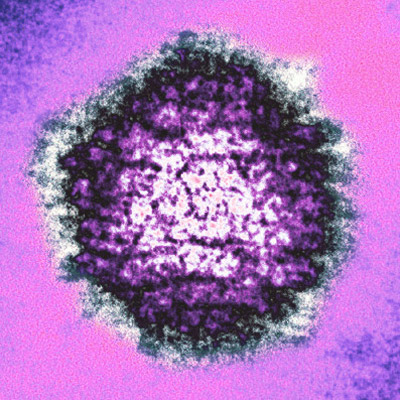 |
Herpes Simplex Virus
(from AJ Cann) |
A really interesting study was published online in Nature recently from work done in Akiko Iwasaki's lab at Yale School of Medicine. In it they introduce a new vaccine strategy they termed "Prime and Pull" and tested this strategy on herpes simplex virus (HSV-2) infections in mice, which is lethal for those poor little guys. The "prime" is a traditional vaccine composed of a tame strain of HSV but the interesting part is the "pull." You see a problem with many vaccines is the absence of key cells in areas of initial infection, such as the vaginal tract with HSV infection. Most vaccine studies have traditionally given a vaccine and then measured the response systemically by looking at antibodies and certain cells in the blood. However, for many viral infections, a great systemic response does not equal protection. This can be for any number of reasons, one of which is that the cells that mediate this response (in this case T cells are what we want) are not "allowed" in the sites of initial infection unless there is already inflammation at the site. This is because the molecules (called chemokines) that signal the need for these specialized cells are generally only produced in the presence of an active infection. So in this study they decided to try to "pull" these specialized cells into the area of initial infection by simply delivering these chemokines to the vaginal tract of mice after immunization but before exposure to HSV. And it worked! The mice in the prime and pull protocol survived a lethal challenge whereas all of the non-vaccinated animals and more than half of the prime only (no pull) animals succumbed to infection. These results are really promising and the authors suggest that this strategy may also help improve HIV vaccination strategies.

